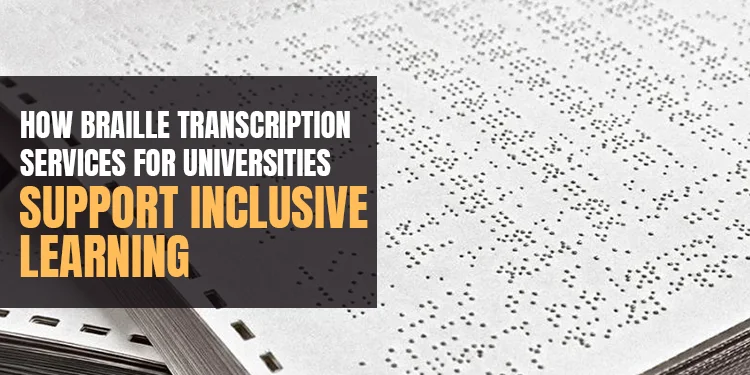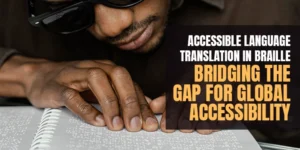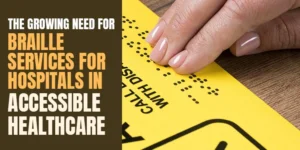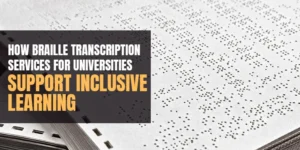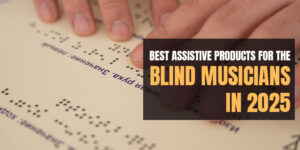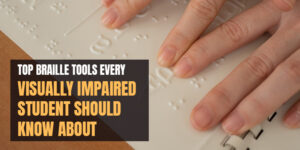The universities across the United States aim to create an environment that is inclusive and where all students can flourish. Accessibility is an integral factor in this endeavor. Students with visual impairments typically have difficulty accessing educational materials. This is why the services of Braille transcription for universities become vital.
These services can convert digital or printed documents into Braille to ensure an equal opportunity to learn for all. With the help of transcription, institutions can move closer to real inclusion and conformity with accessibility standards.
The Importance of Accessibility in Higher Education
Higher education institutions are held to the responsibility of serving different student populations. Students who have blindness or suffer from difficulty seeing should have access to the same textbooks, lecture notes, and research tools as their counterparts. If the materials aren’t accessible, the students will face an unnecessary obstacle. They might require extra time to get ready for class or, even more importantly, they could be unable to access important information entirely.
In providing braille-transcription services to university schools, they can eliminate these obstacles. Accessible materials enable visually disabled students to participate fully in class, group work, as well as exams. This creates an equal learning environment in which each student has a chance to achieve success.
What Are Braille Transcription Services?
Braille transcription is the process of changing normal digital or print text to Braille. Transcribers with specialized software or transcribers finish this procedure. This transcription then gets converted into braille documents that are tactile Braille files that the students are able to use their fingers to read.
Services offer a variety of academic resources:
- Textbooks and course readers and textbooks
- Syllabi and lecture handouts
- Research articles and papers
- Charts, graphs, and graphs as well as mathematical notations
- Quizzes and exam papers
Universities often work with professional transcriptionists to ensure the accuracy and speed of delivery. The importance of high-quality transcription is that any error of a small magnitude can hinder comprehension.
How Braille Transcription for Universities Fosters Inclusive Learning?
1. Equal Access to Course Materials
Students who can read Braille have instant accessibility to all the resources as peers. They are no longer dependent on accommodations that are last-minute or other formats. This helps build confidence and self-confidence.
2. Improved Academic Performance
If students receive their materials in Braille in time, they can be prepared for class, make notes, and learn effectively. This helps improve performance on discussions, assignments, and tests.
3. Conformity with accessibility laws
Universities must comply with federal accessibility standards, like those set out by the Americans with Disabilities Act (ADA). The provision of braille-transcription services to universities can help institutions stay in compliance and avoid legal issues.
4. Encouragement of Diversity and Inclusion
Accessibility isn’t only about the legal obligations. It is a sign of dedication to inclusiveness and diversity. By making transcription a priority, institutions show their appreciation for each student’s journey to learning.
5. Support for STEM Subjects
STEM education usually involves complex equations, data, and diagrams. Specialized transcription can convert this information into tactile or Braille formats. With these tools, visually impaired students can pursue degrees in mathematics, engineering, or the sciences without limitations.
The Process of Braille Transcription in Universities
A transcription procedure follows a logical process to ensure that it is of high accuracy:
- A Collection of materials, Professors send textbooks, slides from lectures, and notes before the lecture.
- Conversion to Braille Transcribers utilize certified software and adhere to the guidelines for formatting.
- Quality and Proofreading Specialists examine documents to ensure accuracy and readability.
- Distribution to students the final Braille copies are distributed before or along with the schedules for classes.
This process is streamlined, which reduces the time it takes and helps students stay in line with their classmates.
Challenges Without Transcription Services
Students who do not receive transcription services are at risk of facing serious challenges. Students might feel isolated or demotivated. They might rely on their instructors or peers to read aloud, which can reduce autonomy. In extreme instances, students might drop classes or switch majors due to resources that aren’t accessible.
The lack of Braille transcribing services at universities can expose institutions to the risk of a bad reputation. Inaccessibility sends the message that inclusion is not a top priority. This impression can negatively impact the enrollment process and also affect trust in the community.
The Role of Technology in Modern Transcription
Technology continues to revolutionize accessibility. Automated transcription tools assist human experts in creating Braille efficiently and accurately. Digital Braille displays allow students to access information from mobile devices. Schools that use these devices increase efficiency and lower costs.
Technology, however, cannot replace human experience. Professional transcribers guarantee clarity, precision, and correct formatting, particularly in the case of complex academic subjects. A balanced approach that integrates technology with skilled review produces the most effective outcomes.
Building an Inclusive Campus Culture
Accessible learning goes beyond resources. Universities need to create environments where students with visual impairments are able to feel comfortable. This means:
- Faculty members are trained on how to make accessible teaching methods
- Assistive technology is available in libraries and classrooms.
- Offering mentorship and counseling programs
- Encouraging peer support networks
In the event that the transcription of Braille for schools is paired with these programs, campuses are more welcoming and inclusive to all.
Final Thoughts
Accessibility isn’t a luxury when it comes to higher education. It is a pillar of fairness, inclusiveness, and student success. Braille transcription for universities makes sure that those with disabilities in their vision disabilities take part in the academic world fully. They have equal access to educational materials and confidence in their capabilities, and the opportunity to be successful.
Schools that emphasize transcription services are leading the way towards inclusive education. They set an impressive example of their commitment to diversity and equity. By doing this, they do not just comply with the law but also uphold the core purpose of education: for every student to be empowered to achieve their potential.

